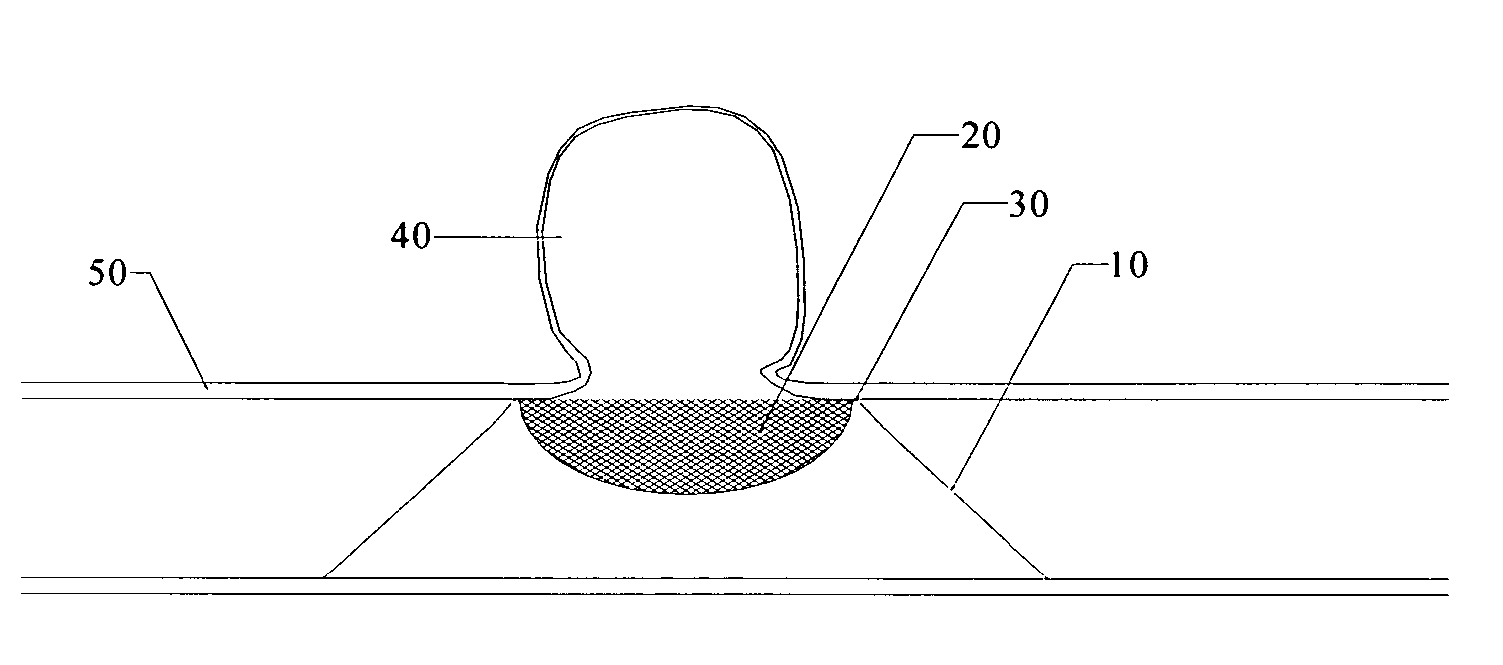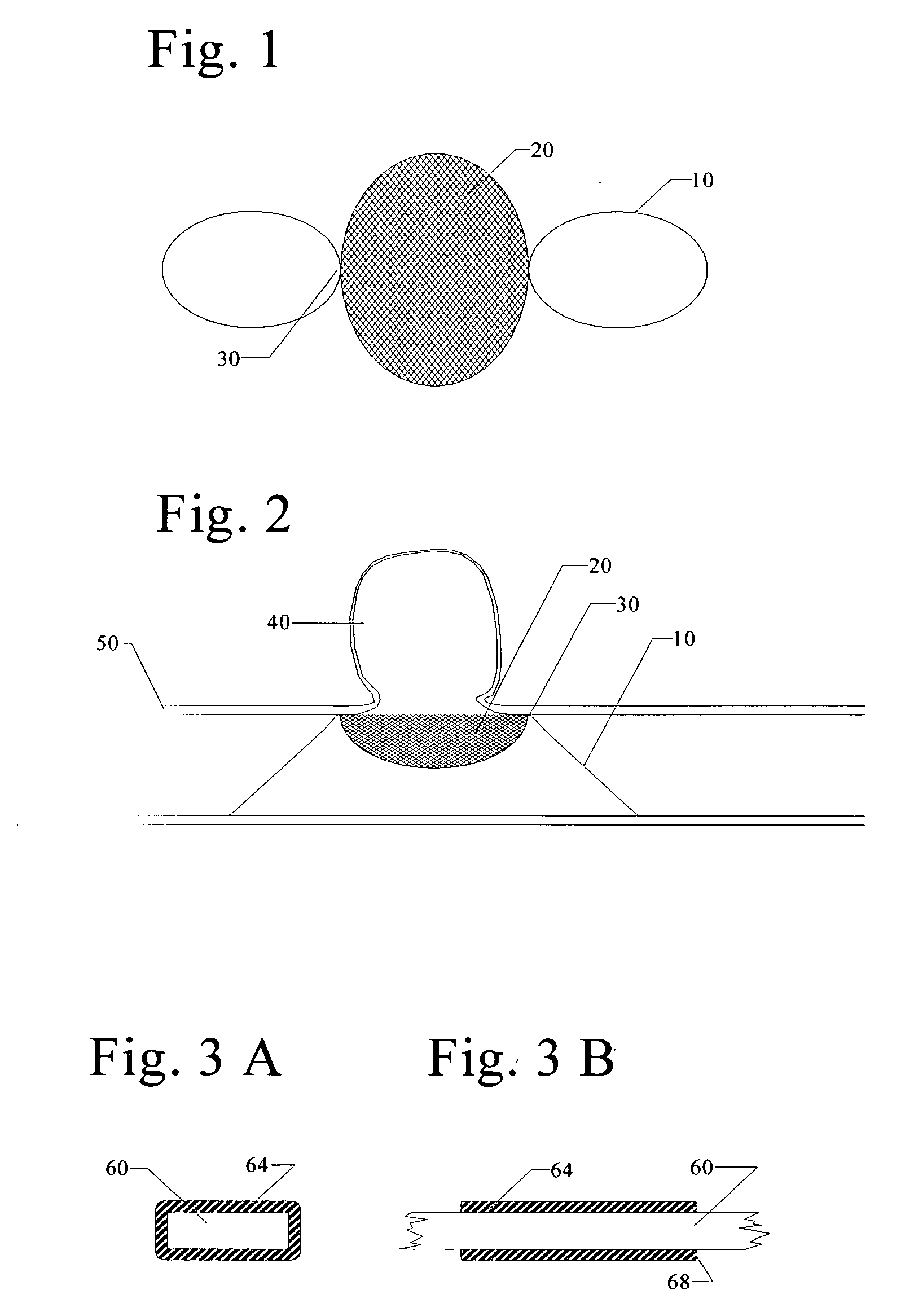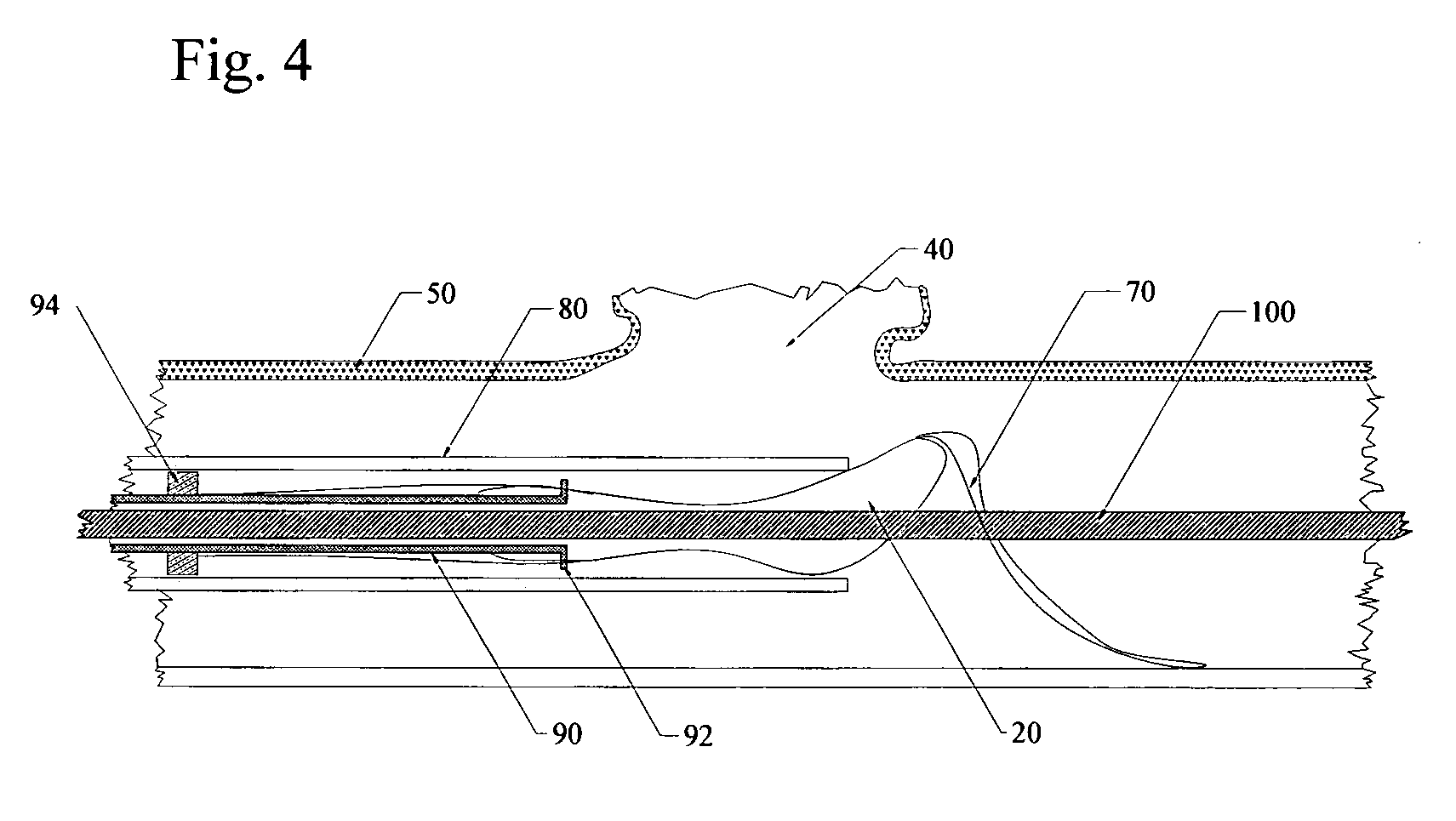Endovascular aneurysm treatment device and delivery system
a technology for treating devices and aneurysms, applied in the field of medical and veterinary endovascular treatment of aneurysms, can solve the problems of difficult treatment, increased risk of bursting, and formation of aneurysms, and achieve the effect of removing the danger of aneurysms
- Summary
- Abstract
- Description
- Claims
- Application Information
AI Technical Summary
Benefits of technology
Problems solved by technology
Method used
Image
Examples
Embodiment Construction
[0034] In the preferred embodiment the stent framework is made of superelastic nitinol. The patch is a continuation to the framework but with a high percent solid area. The location of the patch is made visible by an electroplated gold layer placed over selected sections of the framework.
[0035] The framework preferably would be patterned from a 2-dimentional sheet of nitinol with a thickness between 10 and 50 microns. The sheet may be formed on a copper substrate by sputtering from an appropriately alloyed nitinol target (approximately 50 weight percent Ti and 50 weight percent Ni). The sheet of nitinol is patterned as shown in FIG. 1 to a pattern consisting of two elliptical rings 10 on opposite ends of a central patch 20 connected to a flexible area 30. The minor axis of the elliptical rings is slightly larger than the diameter of the artery 50 that will receive the stent. Artery diameters will typically be between 2 and 4 mm. The major axis of the elliptical rings will be the sq...
PUM
 Login to View More
Login to View More Abstract
Description
Claims
Application Information
 Login to View More
Login to View More - R&D
- Intellectual Property
- Life Sciences
- Materials
- Tech Scout
- Unparalleled Data Quality
- Higher Quality Content
- 60% Fewer Hallucinations
Browse by: Latest US Patents, China's latest patents, Technical Efficacy Thesaurus, Application Domain, Technology Topic, Popular Technical Reports.
© 2025 PatSnap. All rights reserved.Legal|Privacy policy|Modern Slavery Act Transparency Statement|Sitemap|About US| Contact US: help@patsnap.com



